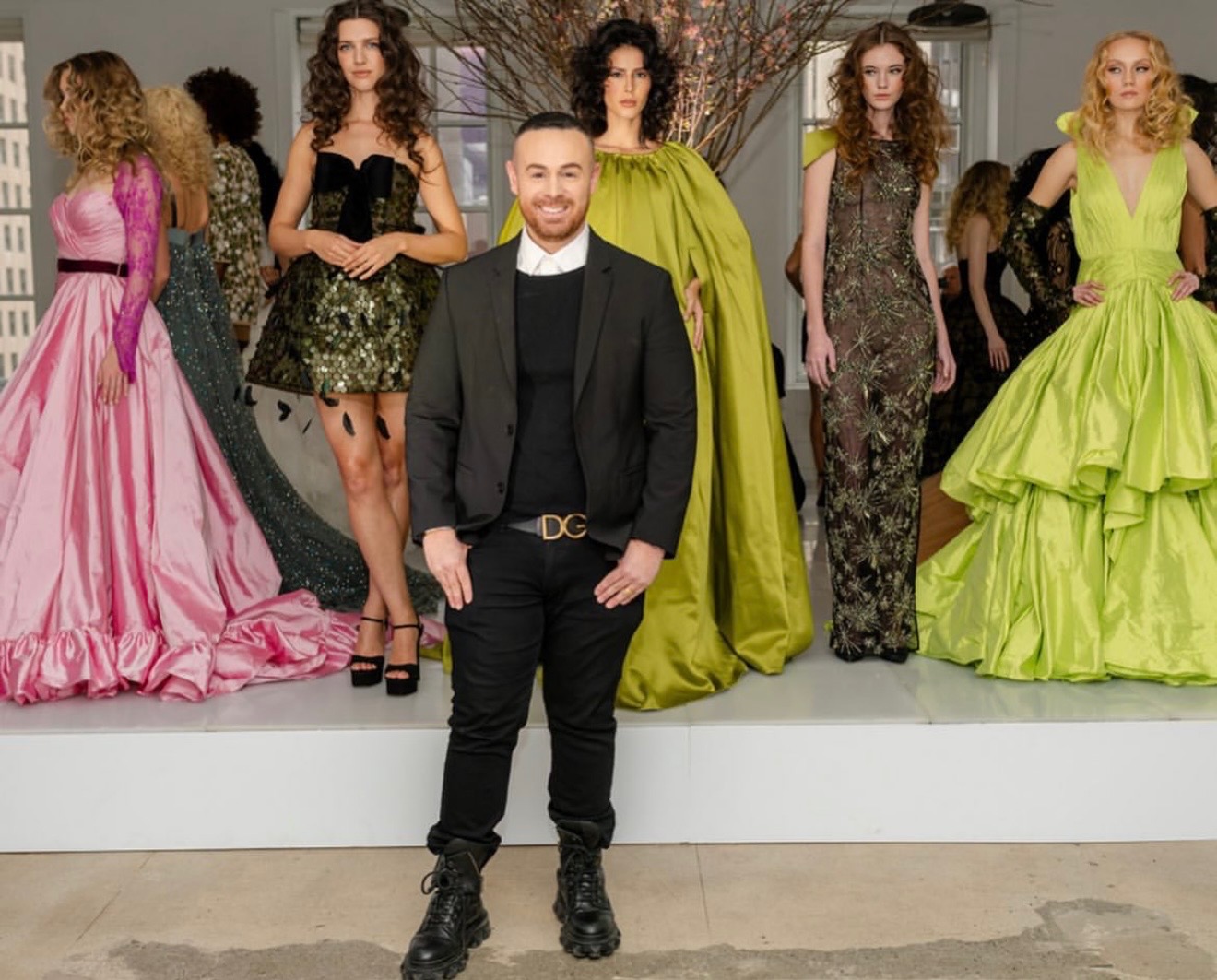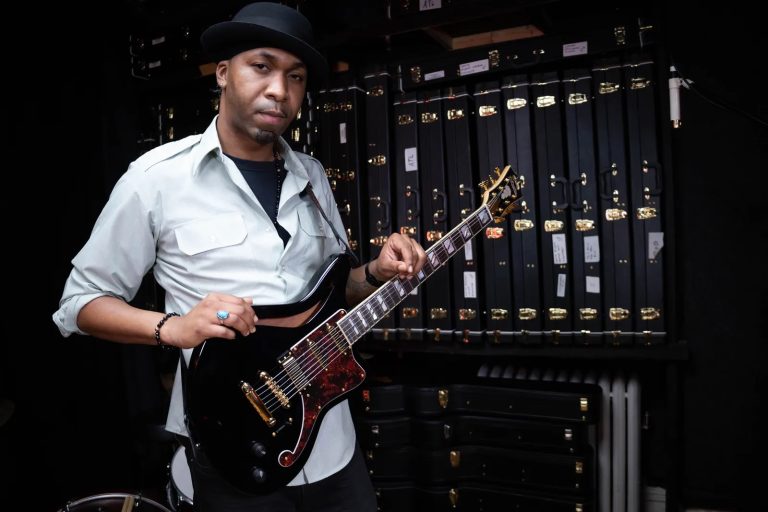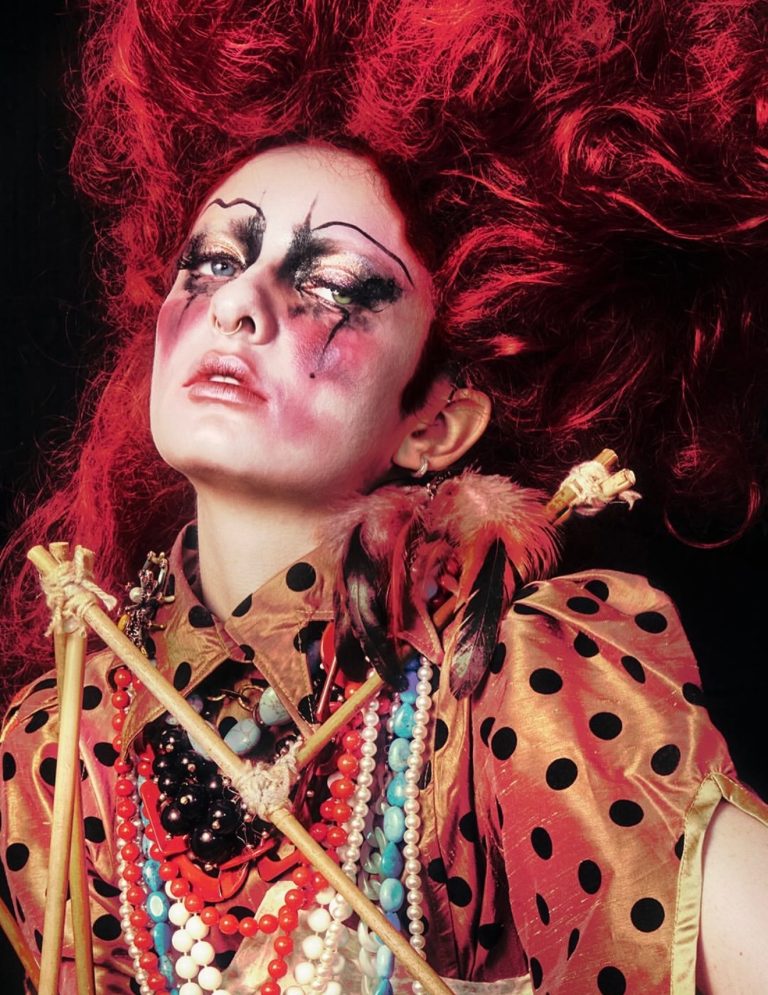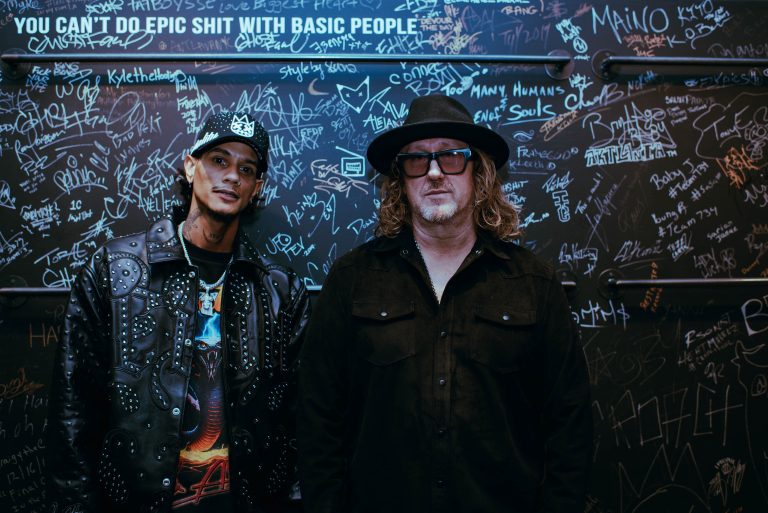How an architect-turned-designer came home to Boston’s Runway Ball in 2025

ON the night of Boston’s Runway Ball at the Hilton Boston Park Plaza, all eyes will be on the models, the music, the lights. But somewhere in the controlled chaos backstage, NYC based famed designer -and Braintree native- Michael DePaulo will be doing something that surprises people who assume high end fashion productions are pure frenzy: he’ll be calm.
“Those shows make me calm,” he says. “My work is done at that point… I kind of sit back and observe… appreciate it and celebrate it.”
That mix of control, discipline, and emotion runs through everything DePaulo does. He designs the way an architect thinks—structurally, intentionally—then layers in sensuality, story, and a very Boston sense of restraint. His gowns have appeared on red carpets, in museums, in wedding albums, and at some of the world’s most rarefied events. On that December night, they’ll command The Runway Ball stage in a collection that doubles as both a career highlight reel and a love letter to the city that made him.
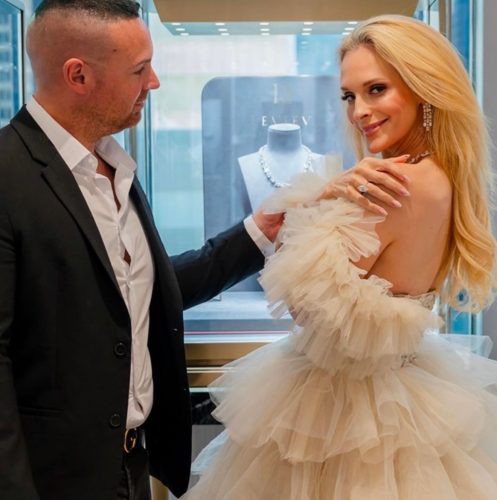
FROM ‘DRESSES AND HOUSES’ TO THE RUNWAY
DePaulo’s origin story sounds almost inevitable in hindsight, like a kid laying out the blueprint for his life before he had the language for it.
“From the age of probably, like, seven [I] was designing dresses and houses,” he remembers with a laugh. “All things luxury, I guess.”
He followed the “houses” half of that instinct first, enrolling at Northeastern University and eventually graduating with a master’s degree in architecture. The school’s co-op program gave him real-world experience in the field—valuable, but not quite right.
“My passion was definitely into more of the fashion world,” he says. After graduation, “I had this epiphany calling for doing fashion,” so he did what ambitious twenty-somethings do: he started sketching.
The initial plan seemed simple enough. “I kind of sketched a portfolio thinking that buyers from all these department stores would just buy based off a sketch,” he says. Instead, what he got was something arguably better: validation from one of the most influential women in American retail.
He sent sketches to Neiman Marcus and got a call from Joan Kaner, then the legendary fashion director and senior executive at the store. “I thought nothing of it. I wasn’t intimidated. I was in my early 20s,” DePaulo says. Kaner urged him to believe in himself. Only later did he realize how big a deal the call was.
“I spoke to someone from MassArt… and she said, ‘Who called you?’ I said, ‘Oh, Joan Kaner.’ She’s like, ‘Michael, that’s a really big deal.’… I was young and naive… I didn’t know the credibility.”
That early encouragement pushed him to turn sketches into samples. He taught himself fabrics. He cold-called buyers. He reached out to media. “I was a sponge,” he says. “I just kept pursuing and learning.”
By Spring 2006, he had his first collection. In 2007 he showed at a trade show at the Essex House hotel in New York and landed orders from both mom-and-pop boutiques and major department stores. “I was surprised at how well I did,” he says.
Then, 2008 hit. “The following year is when all the banks collapsed,” he says matter-of-factly. “I came into reality of a new world of fashion.”
Lots of young brands disappeared in that moment. DePaulo didn’t. He adapted.

BOSTON AS A LAUNCHING PAD -AND A FOREVER HOME BASE
Through the ups and downs, Boston has remained both compass and market.
“Boston was my launching ground,” he says. As a young designer, he dreamed of showing at The Copley Plaza and the Four Seasons. “They were all dream properties, and they all came true.”
Ask him to describe Boston style and he lands on two words: quiet luxury.
“It’s more of a quiet luxury, I would say, than New York or LA,” he explains. “They’re quiet money—there’s definitely money there, obviously. And they like a quality product that is going to last.”
Designing for those clients is personal. “Designing for a Boston client has a little sentiment in me, a little love and passion,” he says. Over the years he has dressed some of the city’s most visible women, including Linda Henry of the Red Sox ownership family. “I did Linda Henry’s wedding gown back in the day, and I’ve done several gowns for her,” he notes with clear affection.
Just as Henry became one of the early champions of his work, Tonya Mezrich has been another essential force in Michael’s Boston story — a connector, confidante, and creative ally whose influence extends across the city’s art, fashion, and philanthropic scenes. Known for her impeccable style and her role as a cultural curator in Boston’s social community, Tonya was one of the first people to open key doors for Michael, introducing him to a circle of clients who appreciate craftsmanship, luxury, and authenticity. Her belief in his talent helped anchor him within Boston’s most influential networks, and her support continues to be one of the threads tying him to the city that shaped him.
Today his schedule is dotted with Boston trunk shows, galas and fittings. He travels in regularly from the New York area to work with “Boston socialites, if you will,” and to attend events like the BINA Farm gala at the Mandarin Oriental. “I come home for family, and I come home for clients, which is great,” he says. “For some reason, I always end up back there.”
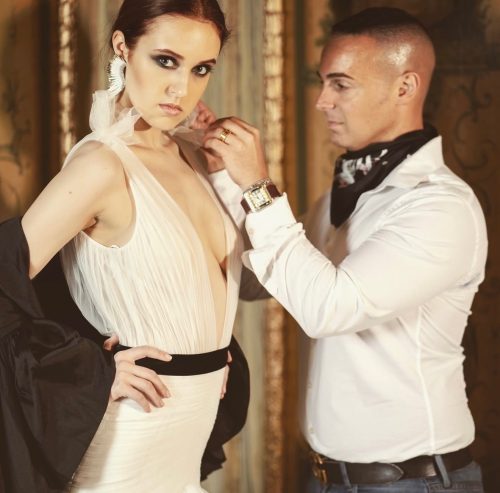
DRESSING BRIDES, BUILDING STORIES
Eveningwear may be his original lane, but bridal has become one of the most powerful parts of his business—and his emotional life as a designer.
“I tapped into bridal later in my career,” he says. “When you dress the bride… it’s such an important thing for her. It’s maybe the one time she’s gonna buy that outrageous price point.”
Through trunk shows—many of them at Saks Fifth Avenue in Boston—and private appointments, he’s learned to read the signals that a dress is more than just fabric.
“I always say to the bride, I can see when the bride lights up in the dress and she feels comfortable,” he explains. “You have to feel comfortable, and you have to own it, and I can see when they don’t want to take it off.”
Those moments energize him more than any runway review. “They become part of your story, in a way,” he says.
They’ve also nudged his business model toward direct-to-client work: fully custom pieces, designed with the wearer from sketch to final fitting.
“The store situation is so saturated,” he says. “Sometimes people come to me for me, and I ease them through the process… creating a sketch for the client, asking what their aspirations are… fitting them in a prototype and then following through with the fittings.”
He doesn’t dismiss ready-to-wear or the big retail experience; he simply sees the math differently. “You go into specific stores… they see a gown, it’s $8,000, but they want to add a sleeve because they don’t feel comfortable… by the time [they] do the alterations, that’s like another $1,200—and it’s not one of a kind,” he says. With him, “you’re getting a custom piece made to your body, made to your [needs].”
In an era obsessed with uniqueness and “main character energy,” that level of intimacy feels like the ultimate luxury.
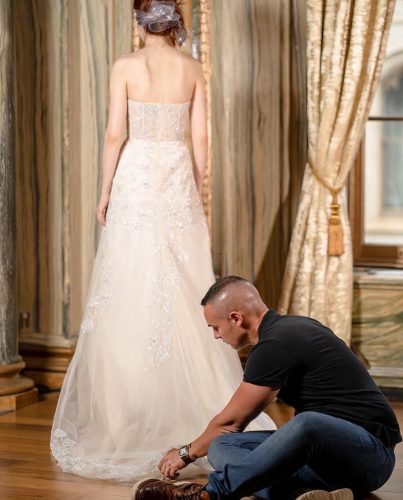
RED CARPETS, MUSEUMS, AND THE LONG LIFE OF A DRESS
For all his Boston roots -and now his NYC home- DePaulo’s work travels far beyond the Charles and Hudson. His gowns have been worn by Kate Beckinsale, Gwen Stefani and many other A-listers. One of his proudest moments came when Carrie Underwood wore a red silk gazar ball gown from his Fall 2016 collection—plunging beaded bodice and all—for the cover of her Christmas album.
The placement itself was a thrill. “They had pulled a bunch of looks for perhaps the album,” he recalls. With celebrity dressing, “you just don’t know if it’s gonna work.” He discovered the outcome almost by accident. “I was looking at the news one day and I said, ‘Is that my dress?’… and it was.”
Years later, he donated the gown to the Country Music Hall of Fame and Museum in Nashville. “I recently donated the dress… and that was kind of—I didn’t realize the impact it would create,” he says. “To see yourself in a museum is kind of cool… that will always stand out. Being on the cover of a holiday album is a legacy-type deal thing.”
What fascinates him most is how long a good design can live. “It was from Fall 2016; I think the album was released 2021 or 2022,” he notes. “More and more you’re seeing all these celebrities wearing vintage clothing now… it’s interesting that a collection never dies. You almost appreciate it more seeing it later.”

SOCIAL MEDIA, AI, AND KEEPING THE SOUL IN THE CLOTHES
If 2008 forced a reset on the business side of fashion, the 2020s have detonated the way we see it.
“With social media, it’s so saturated at this point,” DePaulo says. “There’s just so much information with AI… you’re seeing stuff online that you don’t know if it’s real or fake.”
He’s not anti-technology; he uses it, experiments with it and recognizes its inevitability. “You can’t blindside yourself—you have to move with it,” he admits. He’s even played with generative tools. “I’ve taken attempts, you know, just playfully—‘design a red dress’ or something like that. It always comes up… things are pretty, but I don’t find them inspiring, nor do I find them, like, ‘Oh, I wish I had thought of that.’”
The line he won’t cross is outsourcing his creative core. “I have to have a soul for my product,” he says firmly. “The soul is something you can’t imitate or make up. If I have love for my product… that’s what’s different.”
He’s happy to let technology assist—“perfecting a photo, or creating a landscape or a setting”—but wary of letting it lead. “I just don’t want it to go the route of… that it takes over control of me, if you will,” he says. “I kind of won’t allow it to do that.”
What he misses, sometimes, is the directness of the early days. “When I first started, it was back to the old days where you could contact a buyer at Nordstrom or Neiman’s and you could call the store and ask the operator for their contact information,” he says. “Now it’s become, you know, corporate offices ever-changing, buyers don’t last… it’s all basically social media outreach. It’s a love-hate, in a way.”
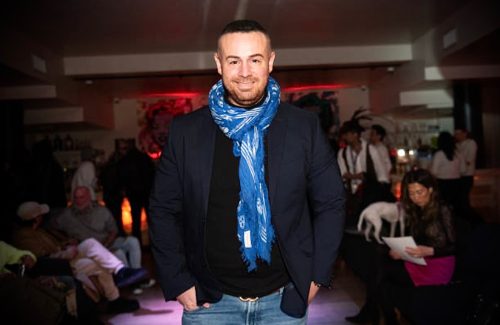
RUNWAY BALL: A HOMECOMING AND A STATEMENT
For DePaulo, the Runway Ball isn’t just another show; it’s personal geography. The Park Plaza Grand Ballroom -where fifteen models on December 14th will be gracefully sauntering his latest designs- is the same space where his older sister was married when he was eleven. “It’s incredible that it’s come full circle,” he says. He’s staged a show there once before and still calls the room “majestic” and “breathtaking.”
When his collection hits that runway for Season Three of The Runway Ball, it will be designed as a story, not a random hit parade.
“I always like to tell a story,” DePaulo says. “I don’t like to just send random pieces up the runway—I want it to have a story, a feel.” Working with (The Runway Ball’s) creative director Amanda (Vargus) has helped refine that vision. “She’s pretty incredible,” he adds.
The plan is to start in his signature lane—high-impact eveningwear—then build toward a bridal finale that nods to his Boston bride base.
“I primarily work with evening wear, but I do a lot of bridal,” he says. “I want to tell the story of the bride… so I think the finale will showcase bridal.” Expect some “over-the-top” pieces: the beaded jumpsuits he’s known for (and that have appeared on Beckinsale and Stefani), and “grand gowns” akin to the Carrie Underwood dress. “I’d like to do a highlight of high points for me, as well as just where I am now,” he says.
Backstage, he’ll rely on the army that makes a show possible—hair, makeup, dressers, steamers, production, DJs, musicians, stylists, editors… “It’s a collective experience,” he says. “I don’t take [them] for granted.”
And it’s the The Runway Ball’s charitable reach that also makes a difference. “I am honored to be supporting St. Jude Children’s Hospital of New England as part of The Runway Ball. It is such a great organization.”
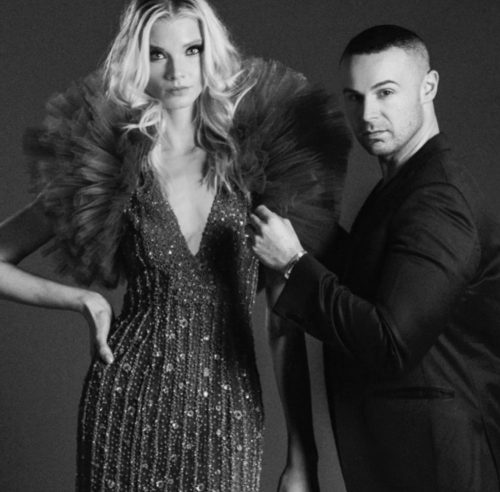
LOOKING AHEAD: A BOUTIQUE BETWEEN BOSTON AND NEW YORK
The next chapter, in his mind, involves an address of his own.
“In terms of the future, my goal would be maybe opening up my own boutique,” he says. Asked if it would be in Boston or New York, he laughs. “I’m kind of unsure at the moment.”
His husband is from New York, and they have a strong audience in Westchester and the city, but Boston tugs hard. “I would definitely see a presence in Boston,” he says. “I have the client, I have the right audience, I have the supporters there. My roots are there, my family’s there.”
The Amtrak makes a dual-city model realistic. “It makes it very feasible to go back and forth very easily,” he says. For now, the boutique is a vision in progress. “If you have a magic ball, please tell me,” he jokes.
What isn’t uncertain is the throughline: a commitment to clothes with soul, clients who feel seen and a city that still feels like home.
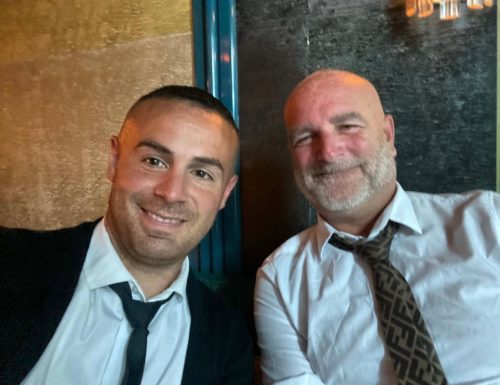
SEASON 3’S FINAL ACT
On the evening of December 14th, with the lights dim in that majestic room -set to the cadences of a Dark Romance theme- the sixth and final act of The Runway Ball, Season Three, will begin to unfold with headliner Michael DePaulo’s first look hitting the runway. This story will be bigger than a single show.
It will be about a kid who sketched “dresses and houses,” an architect who chose fashion, a Bostonian who conquered the mighty New York fashion world without ever abandoning the quiet luxury of his hometown.
And somewhere just offstage, watching it all unfold, will be a designer who’s earned the right to be calm.
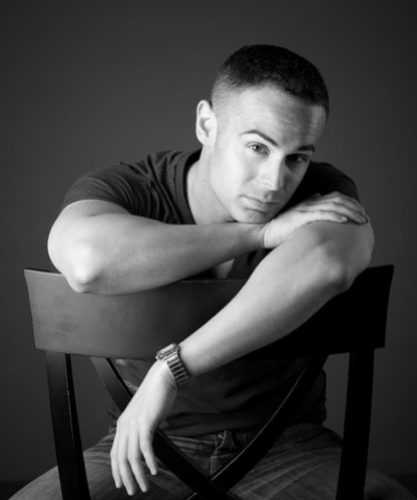
For more information on Boston’s 3rd Annual Runway Ball on December 14th at Hilton Boston Park Plaza, please visit TheRunwayBall.com. To purchase tickets for 2025’s The Runway Ball, please click HERE.

